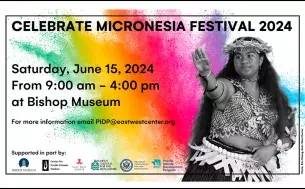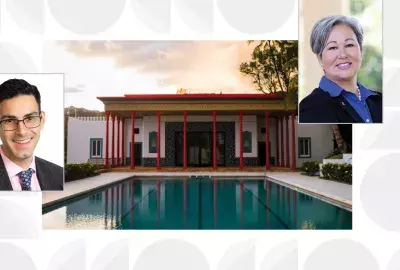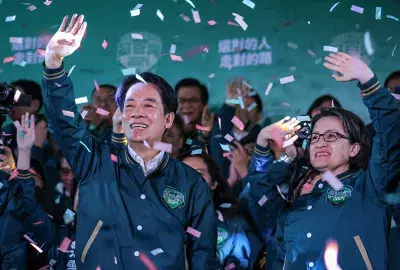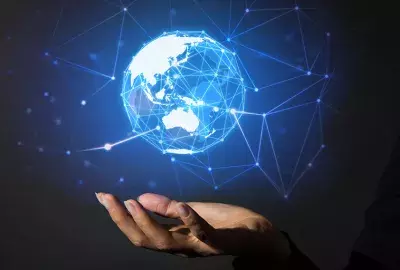Error message
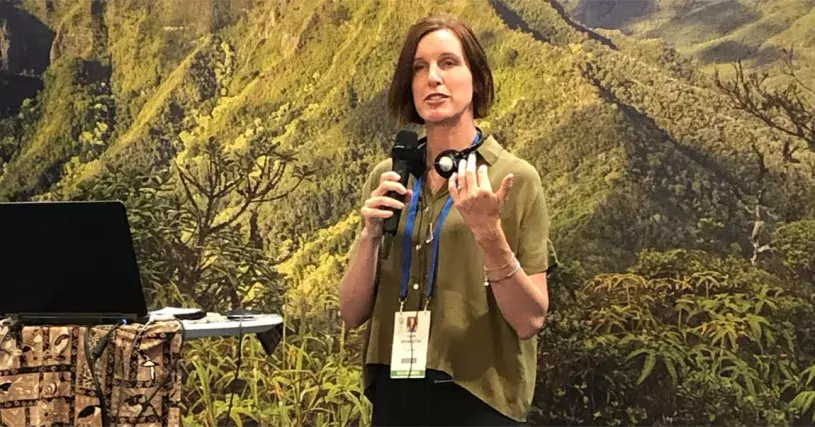
Speakers at the recent World Conservation Congress in France highlight cooperative efforts
Quick take:
- With the Pacific Islands at the forefront of global climate impacts, speakers highlighted partnerships in the region designed to share resiliency knowledge and resources.
- The United Nations’ Local2030 Islands Network connects diverse island communities from all around the world.
- Planners in the Commonwealth of the Northern Marianas Islands are using “smart, safe growth” development strategies to help minimize negative effects.
- Researchers in American Sāmoa study giant coral colonies to learn about how they adapt to a changing climate.
- A conservation corps work program on Guam is helping to prevent soil erosion onto the reefs.
HONOLULU (Sept. 23, 2021) -- With the Pacific Islands on the front lines of mounting climate change impacts, speakers at a presentation held in the Hawai‘i-Oceania Pavilion at the recent World Conservation Congress in Marseille, France, highlighted several cooperative programs as examples of the kind of cross-sector partnerships they said are needed to reinforce climate resiliency in the region. Held every four years, the Conservation Congress put on by the International Union for the Conservation of Nature, or IUCN, is the world’s most important meeting of environmental experts and practitioners from government, academia, civil society, and the private sector.
East-West Center climate specialist Dr. Laura Brewington, who led the session, noted that climate-related disasters like higher tides, stronger tropical storms, droughts, fires, and floods often strike concurrently in the Pacific. “That's why it’s critically important that we are working together to get the best science and information to our islands and communities in order to prepare and adapt,” she said.
Power in partnerships
Brewington discussed the Pacific Regional Integrated Scientific Assessments program that she co-directs, which coordinates interdisciplinary research and partnerships with local, national, and regional stakeholders to support island communities’ ability to respond to changing climate conditions. “We are scientists who work directly with policy makers and stakeholders to find out what their priority information needs are, and then design the research that meets those needs so that we have actionable outcomes,” Brewington said.
The program brings together hundreds of collaborators throughout the region to compile assessments and recommendations for reports like the Pacific Islands Regional Climate Assesment series, which focuses on current and forecasted impacts in individual US-affiliated Pacific Island states and territories.
In a recorded video, island leaders including Federated States of Micronesia President David Panuelo and Guam Governor Lou Leon Guerrero spoke about the United Nations’ Local2030 Islands Network, which connects diverse island communities from all regions of the world to promote solutions and leadership based on the belief that [pullquote]islands are uniquely placed to lead in the global effort to promote sustainable development[/pullquote]. The network “brings island economies together in a peer-to-peer forum to share best practices, educational tools, knowledge, experiences and stories,” said Celeste Connors, executive director of Hawai‘i Green Growth Local2030 Hub.
Local knowledge meets innovation
Via prerecorded video shown at the IUCN presentation, EWC specialist Zena Grecni led a virtual discussion panel featuring representatives of what she called “multi-partner innovation hubs that are applying science and local knowledge to bring better outcomes” in American Sāmoa, Guam and the Commonwealth of the Northern Marianas Islands (CNMI).
Erin Derrington from the Commonwealth’s Office of Planning and Development spoke about what she said is “an exciting time in the CNMI as we work to finalize our first comprehensive sustainable development plan, which aims to chart a path towards more sustainable growth for people, our economy and our environment.”
The plan focuses on employing a variety of technological tools to achieve more resilient natural and human systems through a set of development strategies known as “smart, safe growth,” which she said is “a comprehensive planning concept” based on three key areas of practice: hazard mitigation, climate impact adaptation, and smart growth. “[pullquote]The more we can comprehensively plan for change and identify impacts of concern, the more we’re able to minimize negative effects[/pullquote],” Derrington said.
American Sāmoa Coral Reef Advisory Group ecologist Georgia Coward talked about a collaborative project to document the islands’ exceptionally large coral colonies—including some of the largest recorded anywhere at more than 60 feet across and hundreds of years old—in order to understand their resilience. “This is really important because the wealth of information in these massive, healthy colonies and ecosystems can build a picture as to why they've adapted to changing environmental conditions over the centuries,” Coward said. “And that might provide some insight and solutions for climate change mitigation and adaptation.”
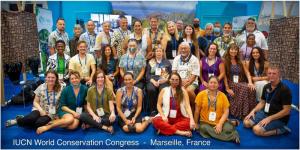
Sharing creative solutions
In the virtual panel, Dr. Austin Shelton, director of the Center for Island Sustainability at the University of Guam, highlighted the Guam Green Growth initiative, including the recent launch of a conservation corps as a workforce development program. “Now they are out in our community,” he said, “planting trees and putting erosion control devices into our watersheds to reduce effects on downstream coral reefs, which will help create a little bit more resilience for the corals here to withstand the climate impacts that we're seeing.”
Other projects include using drones that drop seed balls to help reforest hard-to-reach hillsides, installing solar panels on schools, plans to establish aquaponic systems in several villages, and a recently opened “circular economy maker-space” where entrepreneurs have access to 3D printers and other high-tech equipment to turn waste materials into new, marketable products.
Shelton said the importance of coalitions like the Local2030 Islands Network lies in their power to “allow islands to share innovations with each other on how they can build a sustainable future. I think a lot of the reason we have these projects happening now to build resilience against climate change in Guam is not only because we have island wisdom available with our people being here for thousands of years, but also because we've now had the opportunity to learn from other island examples.”
Speakers at the recent World Conservation Congress in France highlight cooperative efforts
Quick take:
- With the Pacific Islands at the forefront of global climate impacts, speakers highlighted partnerships in the region designed to share resiliency knowledge and resources.
- The United Nations’ Local2030 Islands Network connects diverse island communities from all around the world.
- Planners in the Commonwealth of the Northern Marianas Islands are using “smart, safe growth” development strategies to help minimize negative effects.
- Researchers in American Sāmoa study giant coral colonies to learn about how they adapt to a changing climate.
- A conservation corps work program on Guam is helping to prevent soil erosion onto the reefs.
HONOLULU (Sept. 23, 2021) -- With the Pacific Islands on the front lines of mounting climate change impacts, speakers at a presentation held in the Hawai‘i-Oceania Pavilion at the recent World Conservation Congress in Marseille, France, highlighted several cooperative programs as examples of the kind of cross-sector partnerships they said are needed to reinforce climate resiliency in the region. Held every four years, the Conservation Congress put on by the International Union for the Conservation of Nature, or IUCN, is the world’s most important meeting of environmental experts and practitioners from government, academia, civil society, and the private sector.
East-West Center climate specialist Dr. Laura Brewington, who led the session, noted that climate-related disasters like higher tides, stronger tropical storms, droughts, fires, and floods often strike concurrently in the Pacific. “That's why it’s critically important that we are working together to get the best science and information to our islands and communities in order to prepare and adapt,” she said.
Power in partnerships
Brewington discussed the Pacific Regional Integrated Scientific Assessments program that she co-directs, which coordinates interdisciplinary research and partnerships with local, national, and regional stakeholders to support island communities’ ability to respond to changing climate conditions. “We are scientists who work directly with policy makers and stakeholders to find out what their priority information needs are, and then design the research that meets those needs so that we have actionable outcomes,” Brewington said.
The program brings together hundreds of collaborators throughout the region to compile assessments and recommendations for reports like the Pacific Islands Regional Climate Assesment series, which focuses on current and forecasted impacts in individual US-affiliated Pacific Island states and territories.
In a recorded video, island leaders including Federated States of Micronesia President David Panuelo and Guam Governor Lou Leon Guerrero spoke about the United Nations’ Local2030 Islands Network, which connects diverse island communities from all regions of the world to promote solutions and leadership based on the belief that [pullquote]islands are uniquely placed to lead in the global effort to promote sustainable development[/pullquote]. The network “brings island economies together in a peer-to-peer forum to share best practices, educational tools, knowledge, experiences and stories,” said Celeste Connors, executive director of Hawai‘i Green Growth Local2030 Hub.
Local knowledge meets innovation
Via prerecorded video shown at the IUCN presentation, EWC specialist Zena Grecni led a virtual discussion panel featuring representatives of what she called “multi-partner innovation hubs that are applying science and local knowledge to bring better outcomes” in American Sāmoa, Guam and the Commonwealth of the Northern Marianas Islands (CNMI).
Erin Derrington from the Commonwealth’s Office of Planning and Development spoke about what she said is “an exciting time in the CNMI as we work to finalize our first comprehensive sustainable development plan, which aims to chart a path towards more sustainable growth for people, our economy and our environment.”
The plan focuses on employing a variety of technological tools to achieve more resilient natural and human systems through a set of development strategies known as “smart, safe growth,” which she said is “a comprehensive planning concept” based on three key areas of practice: hazard mitigation, climate impact adaptation, and smart growth. “[pullquote]The more we can comprehensively plan for change and identify impacts of concern, the more we’re able to minimize negative effects[/pullquote],” Derrington said.
American Sāmoa Coral Reef Advisory Group ecologist Georgia Coward talked about a collaborative project to document the islands’ exceptionally large coral colonies—including some of the largest recorded anywhere at more than 60 feet across and hundreds of years old—in order to understand their resilience. “This is really important because the wealth of information in these massive, healthy colonies and ecosystems can build a picture as to why they've adapted to changing environmental conditions over the centuries,” Coward said. “And that might provide some insight and solutions for climate change mitigation and adaptation.”

Sharing creative solutions
In the virtual panel, Dr. Austin Shelton, director of the Center for Island Sustainability at the University of Guam, highlighted the Guam Green Growth initiative, including the recent launch of a conservation corps as a workforce development program. “Now they are out in our community,” he said, “planting trees and putting erosion control devices into our watersheds to reduce effects on downstream coral reefs, which will help create a little bit more resilience for the corals here to withstand the climate impacts that we're seeing.”
Other projects include using drones that drop seed balls to help reforest hard-to-reach hillsides, installing solar panels on schools, plans to establish aquaponic systems in several villages, and a recently opened “circular economy maker-space” where entrepreneurs have access to 3D printers and other high-tech equipment to turn waste materials into new, marketable products.
Shelton said the importance of coalitions like the Local2030 Islands Network lies in their power to “allow islands to share innovations with each other on how they can build a sustainable future. I think a lot of the reason we have these projects happening now to build resilience against climate change in Guam is not only because we have island wisdom available with our people being here for thousands of years, but also because we've now had the opportunity to learn from other island examples.”
East-West Wire
News, Commentary, and Analysis
The East-West Wire is a news, commentary, and analysis service provided by the East-West Center in Honolulu. Any part or all of the Wire content may be used by media with attribution to the East-West Center or the person quoted. To receive East-West Center Wire media releases via email, subscribe here.
For links to all East-West Center media programs, fellowships and services, see www.eastwestcenter.org/journalists.




